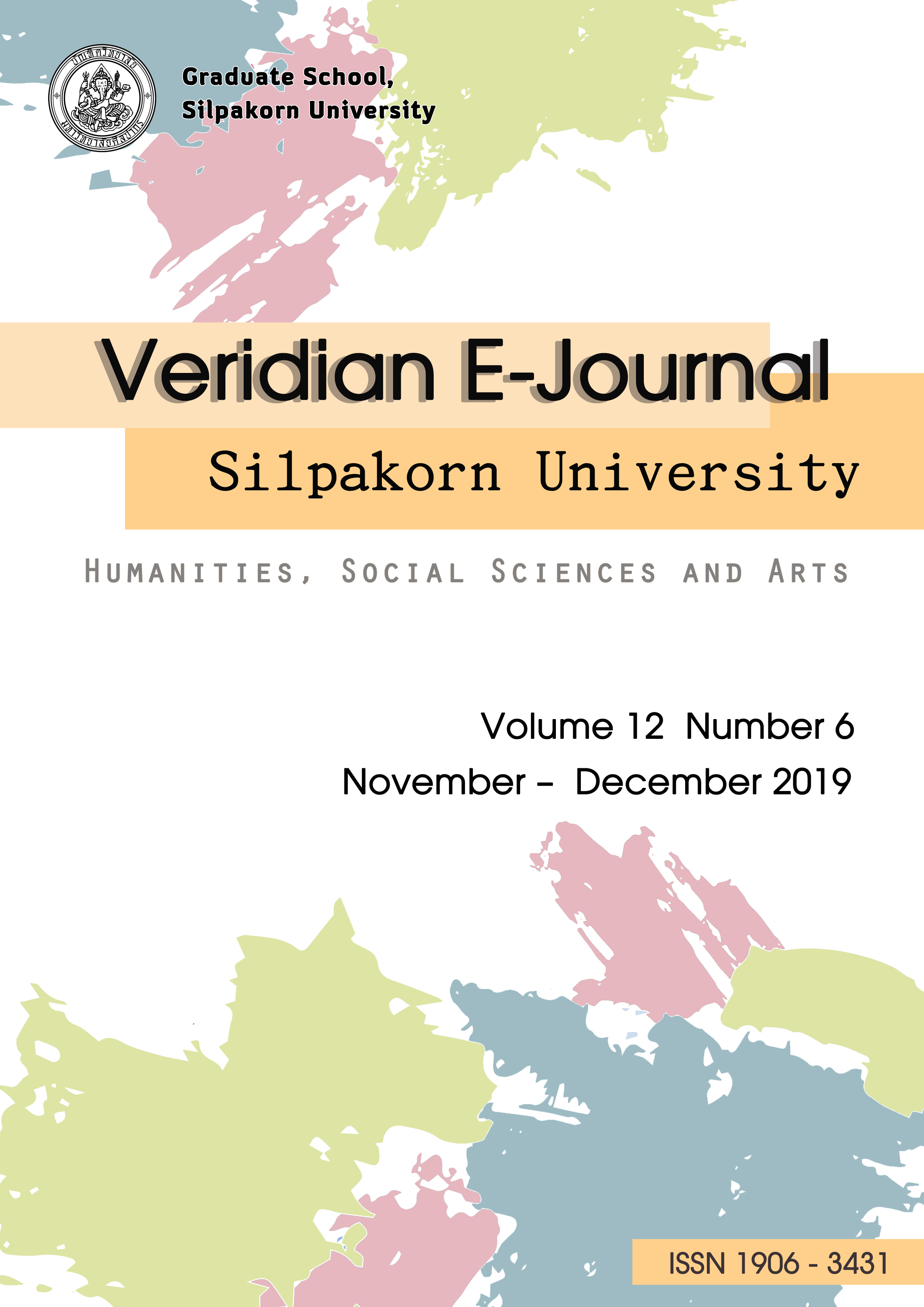Participatory Art In Thai Society And Its Hidden Power
Main Article Content
Abstract
Participatory practice, as a form of contemporary art, seeks to remove the boundaries between artists, art, audiences and spaces. Whilst this process offers audiences a chance to voluntarily participate in the artwork, it can also be seen as the exercise of political control over unwitting participants. This article will investigate the role of participatory art in Thai society, and its political influence under the guise of participation. To achieve this, three case studies of contemporary Thai artists will be examined. These artists have been selected due to their international recognition, and their centrality to each artistic movement relating to culture, community and territory, and social organisation.[1] These three cases are 1) Rirkrit Tiravanija’s conceptual art ‘Untitled 1990 (Pad Thai)’ 2) Wasinburee Supanichvoraparch’s annual ‘Art Normal’ project (since 2011), which aims to create arts dialogue in the community of Ratchaburi province. 3) Sutee Kunavichayanont’s protest art ‘Thai Uprising' (2013-2014). In order to investigate these practices, books, papers, articles from e-newspapers and other related documents such as interview scripts have been reviewed. In some cases, the writer has taken part in the practices as a passive or active participant. These three case studies will be thematically examined following Professor Michael Kelly’s three categories of participatory art in 'Encyclopedia of Aesthetics' - relational, activist, and antagonistic.
In conclusion, this paper suggests that regardless of processes, participatory art encourages relationships between participants and society within a specific place and time - a process that can induce collective thought and action under the premise of solidarity. Given the artist’s privileged position within this relationship, art creators must remain cautious not to manipulate the rights and perspectives of participants throughout the artistic process.[1] Saraburiwitthayakhom, sangkhom manut. khwāmmāi kān yū rūam kan læ ʻongprakō̜p khō̜ng sangkhom. [Human Society. Meanings, Coexistence and Elements of Social Structure]. Retrieved on November 5, 2019 from https://sites.google.com/site/30261bambuckk/khwam-hmay-kar-xyu-rwm-kan-laea-xngkh-prakxb-khxng-sangkhm

